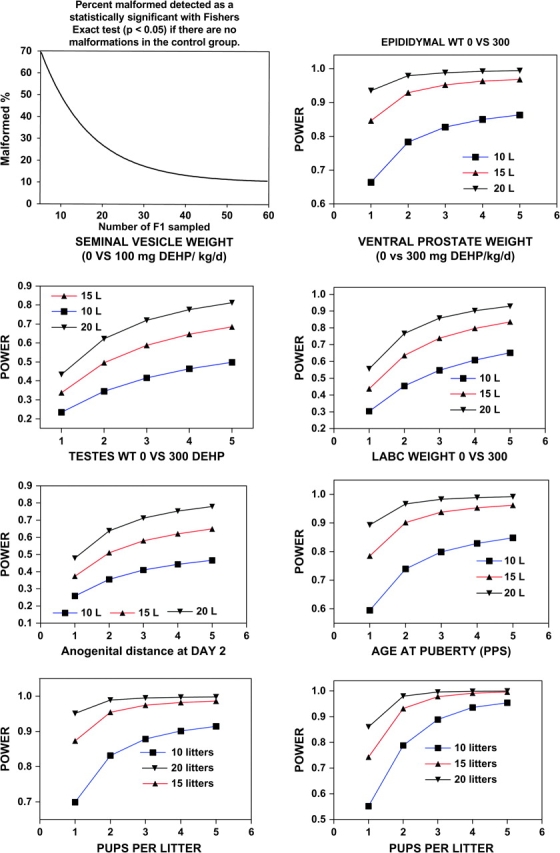FIG. 2.

Power curves for reproductive organ weights, malformation rates, anogenital distance and age at preputial separation (puberty). The data from our transgenerational study with DEHP were analyzed using PROC MIXED available on SAS to obtain estimates of components of variation (for litters vs. pups within litters) that make up the overall variability of the means in order to assess the implications for statistical power of using data from multiple pups per litter. Following this analysis, we calculated power to detect the treatment effects as described by Raudenbush and Xiao-Feng (2001). The objective of this was to determine the proportion of the overall error variance due to litter-to-litter variability versus the proportion accounted for by the pups within litters. This retrospective analysis can be useful for designing optimal sampling strategies for future studies. It basically allows one to determine how much the statistical power of a study is enhanced by examining several pups from the same litter rather than using only one pup/per sex/litter. Because the pups in the DEHP treated litters do not respond identically, the more variable the pups are within the litter the more power is enhanced, and hence the standard error of the mean is reduced, by examining multiple pups from the same litter.
